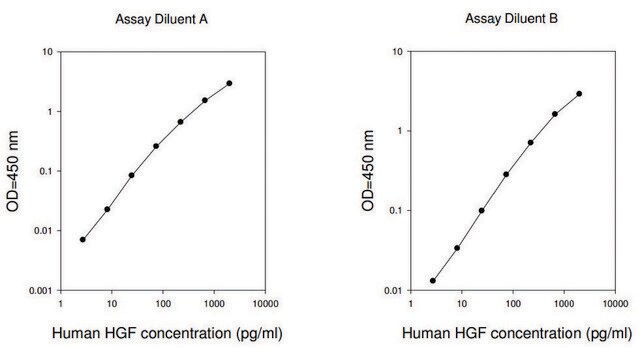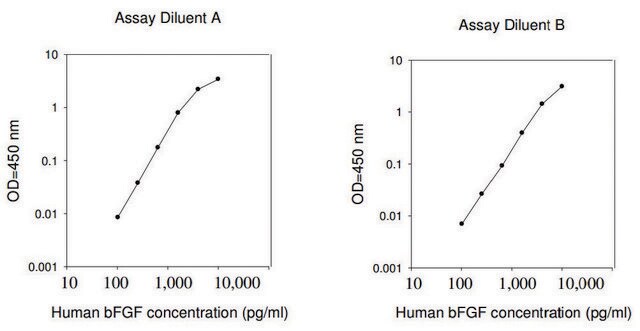RAB0329
Mouse SCF ELISA Kit
for serum, plasma and cell culture supernatant
Sign Into View Organizational & Contract Pricing
All Photos(2)
About This Item
UNSPSC Code:
41116158
NACRES:
NA.32
Recommended Products
species reactivity
mouse
packaging
kit of 96 wells (12 strips x 8 wells)
technique(s)
ELISA: suitable
capture ELISA: suitable
input
sample type serum
sample type plasma
sample type cell culture supernatant(s)
assay range
inter-assay cv: <12%
intra-assay cv: <10%
sensitivity: 5 pg/mL
standard curve range: 2.74-2000 pg/mL
detection method
colorimetric
shipped in
wet ice
storage temp.
−20°C
Gene Information
mouse ... Kitl(17311)
General description
The Mouse SCF ELISA (Enzyme-Linked Immunosorbent Assay) kit is an in vitro enzyme-linked immunosorbent assay for the quantitative measurement of mouse SCF in serum, plasma, cell culture supernatants and urine.
Immunogen
Recombinant Mouse SCF
Application
For research use only. Not for use in diagnostic procedures.
Please refer to the attached General ELISA KIT Procedure (sandwich, competitive & Indirect ELISA)
Please refer to the attached General ELISA KIT Procedure (sandwich, competitive & Indirect ELISA)
Biochem/physiol Actions
Stem cell Factor (SCF) or kit ligand or steel factor or mast cell growth factor is a growth factor essential to bring about various homeostatic events like maintenance of hematopoietic stem cells, mast cells and melanocytes. SCF is essential for maintaining mature melanocytes and to promote hair pigmentation. In ovary, granulosa cells produce kit ligand, which promotes activation and growth of primordial follicles. Kit ligand converts primordial follicles to primary follicles and leads to subsequent follicle growth. Kit ligand acts as an anti-apoptotic factor and causes the growth of primordial follicles in mouse fetal ovary. Kit signalling is crucial for growth of interstitial cells of Cajal (ICCs) and regulates gastrointestinal motility in fetal mice.
Other Notes
A sample Certificate of Analysis is available for this product.
Please type the word sample in the text box provided for lot number.
Please type the word sample in the text box provided for lot number.
Kit Components Also Available Separately
Product No.
Description
SDS
Signal Word
Warning
Hazard Statements
Precautionary Statements
Hazard Classifications
Met. Corr. 1
Storage Class Code
8A - Combustible corrosive hazardous materials
Choose from one of the most recent versions:
Already Own This Product?
Find documentation for the products that you have recently purchased in the Document Library.
Identification of hair shaft progenitors that create a niche for hair pigmentation
Liao CP, et al.
Genes & Development, 31, 1-13 (2017)
Stem cell factor/Kit signal insufficiency contributes to hypoxia-induced intestinal motility dysfunctions in neonatal mice
Ren H, et al.
Digestive Diseases and Sciences, 62(5), 1193-1203 (2017)
Charlotte B Westbury et al.
Radiotherapy and oncology : journal of the European Society for Therapeutic Radiology and Oncology, 111(2), 206-211 (2014-04-22)
Mast cells are involved in the pathogenesis of radiation fibrosis and may be a therapeutic target. The mechanism of increased mast cell number in relation to acute and late tissue responses in human skin was investigated. Punch biopsies of skin
Kit ligand decreases the incidence of apoptosis in cultured vitrified whole mouse ovaries.
Abdi S
Reproductive Biomedicine Online, 30(5), 493-503 (2015)
Armelle Calipel et al.
Clinical & experimental metastasis, 31(5), 553-564 (2014-03-22)
Imatinib mesylate is used in targeted therapy of cancer to inhibit type III tyrosine kinase receptors, such as KIT and platelet-derived growth factor receptors (PDGFRs). Expression of KIT in uveal melanoma (UM) suggests that this receptor may be the target
Our team of scientists has experience in all areas of research including Life Science, Material Science, Chemical Synthesis, Chromatography, Analytical and many others.
Contact Technical Service








